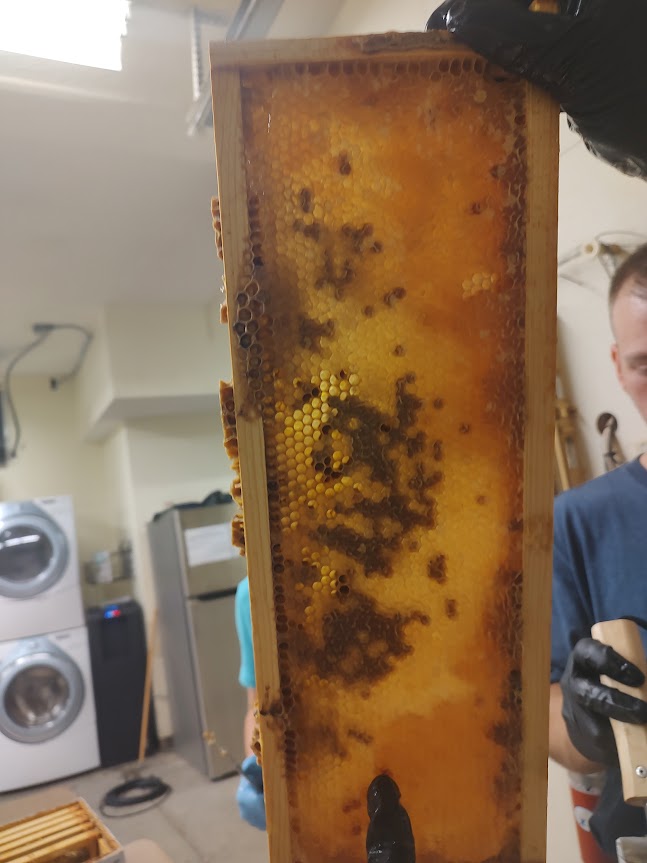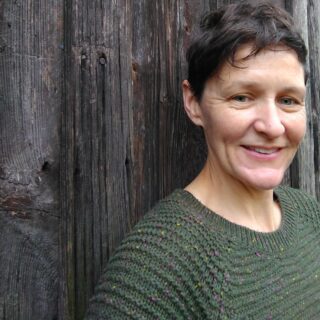One of the SWEETEST benefits of beekeeping is harvesting the honey, of course! Our three colonies are doing really well and we expect to harvest around 60 pounds of honey this year, or about 5 gallons. We typically harvest in late June or early July, only removing honey if the colony has ample honey reserves. During the summer months, we inspect the health of our colonies every three weeks.

The darker tones of this honey frame contain pollen while the amber and light gold tones show the natural variation in honey color since it comes from a variety of different flowers.
Wax capping the bees create must be removed before honey can be extracted.
We use these checks to confirm that brood (baby bees) are present. We also check for a few common pests of honeybee colonies: small hive beetle and varroa mite. We trap small hive beetles in suspended oil traps that we hang in the hive. The openings of the traps are too small for the bees, but just right for the beetles!
To test for varroa mite, we trap a small sampling of bees and perform an alcohol wash test. The bees used in this test pass away instantly, and the mites attached to their bodies fall to the bottom of a clear mesh cup. We then count the mite bodies and determine if any action is needed.
At our June inspection, we had mite counts as high as 10 mites/300 bees, which surpasses the recommended threshold. We would really like to harvest honey this year and most chemical treatments for varroa mite are not appropriate when temperatures are high so we are trying something new- we will be dusting the bees with powdered sugar! This “sweet dusting” encourages the bees to groom themselves (and each other) and impairs the mites’ grippy legs, causing them to fall off the bees. Fingers crossed!
Dusting bees with powdered sugar encourages self grooming and can aid in removal of body pests, like varroa mites.
Once the heat of summer really intensifies and especially if rain is sparse, many plants throughout the gardens begin to bloom less. In beekeeping, this period is called the summer dearth. Less open flowers mean less sources of nectar and pollen, so less material to make honey to feed the colony.
We don’t want our bees to starve, so we are very conservative with the amount of honey we leave on the hive. A deep box with honey, brood and bees can weigh 70-90 pounds, while a medium box can weigh 40-50 pounds. We try to leave around 100 pounds of resources on for the bees in the dearth.
Once the temperatures cool in fall, new plants begin to bloom (or revived ones begin to bloom again) and bees have a small window of time in which they can fly, gather resources, and make more honey before winter. For new colonies, or those with scant resources, it is common to feed sugar water to mimic flower nectar by placing a feeder inside the hive. A 1:1 mix of water and white granulated sugar is typically what is given in Atlanta. It is important to use white granulated sugar specifically, bees cannot digest other types well.
Although beekeeping has many nuances, it is rewarding to work alongside these fascinating creatures!


